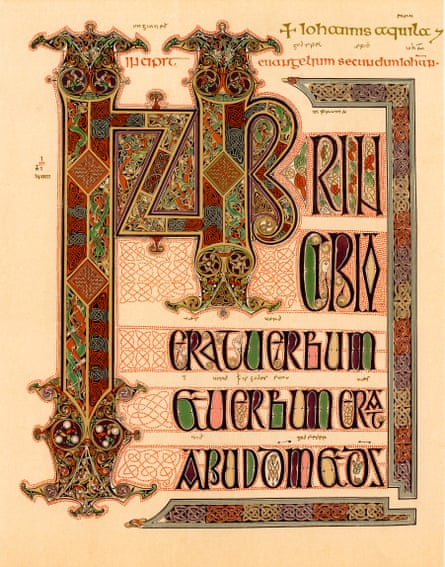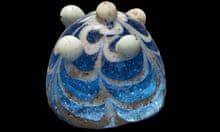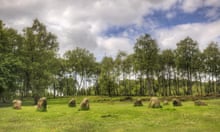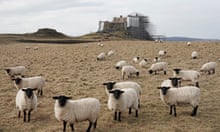Archaeologists are to launch a search on Holy Island in Northumberland for the monastery where one of the most beautiful books in western Europe, the Lindisfarne Gospels, was made.
The quest may puzzle tourists since the romantic priory ruins have been a magnet for artists and photographers for centuries. However the ruins, on an island connected by a causeway accessible only at low tide, date from early in the 12th century. The original monastery was founded by the Irish monk Aidan in 635 and sacked by the Vikings 160 years later.
“Most of Aidan’s monastery probably lies under the modern village, and we’re not going to be able to knock that down – but we have had some encouraging geophysics results indicating structures under some areas of open ground which we will be able to get at,” said David Petts, a lecturer at Durham University and an expert on the history of Lindisfarne, who will lead the excavation team in June.
However, much of the hard labour will be done by members of the public who will be paying up to £525 a week – including copious mugs of tea but not accommodation – for the privilege.
The money for the excavation has been raised through a crowdfunding project, Dig Ventures, founded by three archaeologists to fill the gap left by the sharp decline in funding of research archaeology by universities and local authorities. It is also to encourage the public to engage directly with both excavations and post-excavation analysis. Petts said it would have been almost impossible to raise the money for the Lindisfarne project any other way given the present funding climate.
He added: “Surprisingly little is known about the early monastery, and very little has been found from it, mainly a few scraps of broken masonry with poor records of where exactly they were recovered.”
Aidan was sent from the Scottish island of Iona to bring Christianity to Northumberland, and Petts believes that at its height his monastery spread far further than the present priory ruins, with dozens of monks supported by servants and farmers.
“The monks led a simple lifestyle, and their buildings were probably timber, so we’re not looking for treasure,” Petts said. “We might find evidence of buildings burned down and rebuilt, bones from the kitchen, traces of metalworking, even, if we are fantastically lucky, some writing implements.”

The island became famous for the beautiful illuminated manuscripts produced by the monks. The Lindisfarne Gospels, now one of the greatest treasures of the British Library, are believed to be the work of one man, Eadfrith. Created in the late seventh or early eighth century, the manuscript’s “carpet pages” of scrolling ornament are so intricate their minute detail is almost invisible to the naked eye, said Petts.
A vivid account of the Viking raid in 793, regarded as the first major attack in a century of terror for vulnerable monasteries and settlements along the coast, appears in the Anglo-Saxon Chronicle. Terrible omens preceded the raid, the chroniclers wrote, “whirlwinds, lightning, and fiery dragons were seen flying in the sky”, and then “the ravaging of wretched heathen people destroyed God’s church at Lindisfarne”.
The monastery survived – and Petts believes, was never fully abandoned – but in 875 fearing another raid, this time not from the sea but from the Vikings now settled in York, almost all the monks fled taking with them their greatest treasures including the body of their saint, Cuthbert. Cuthbert was eventually reburied in a magnificent shrine in Durham Cathedral which attracted tourists from across Europe. The gospels may have gone with the monks, but after passing through many hands eventually came to the British Library in the staggering collection of early manuscripts assembled by Sir Robert Cotton in the 17th century.
Regular claims have been made for their return to the north, and the British Library sent them on strictly temporary loan to Durham in 2013, in an exhibition seen by more than 100,000 people.
Tony Robinson, who was presenter of the Time Team TV series which excavated on Lindisfarne in 2001, is convinced there is far more evidence of the early monastery waiting to be found.
Robinson is also a trustee of Dig Ventures. “Time Team helped in the process of tearing down archaeology from the ivory towers of academia, and bringing it into the public gaze. Dig Ventures is the logical successor – people are really hungry to get involved in archaeology, and this is a way in for them,” he said.











Comments (…)
Sign in or create your Guardian account to join the discussion